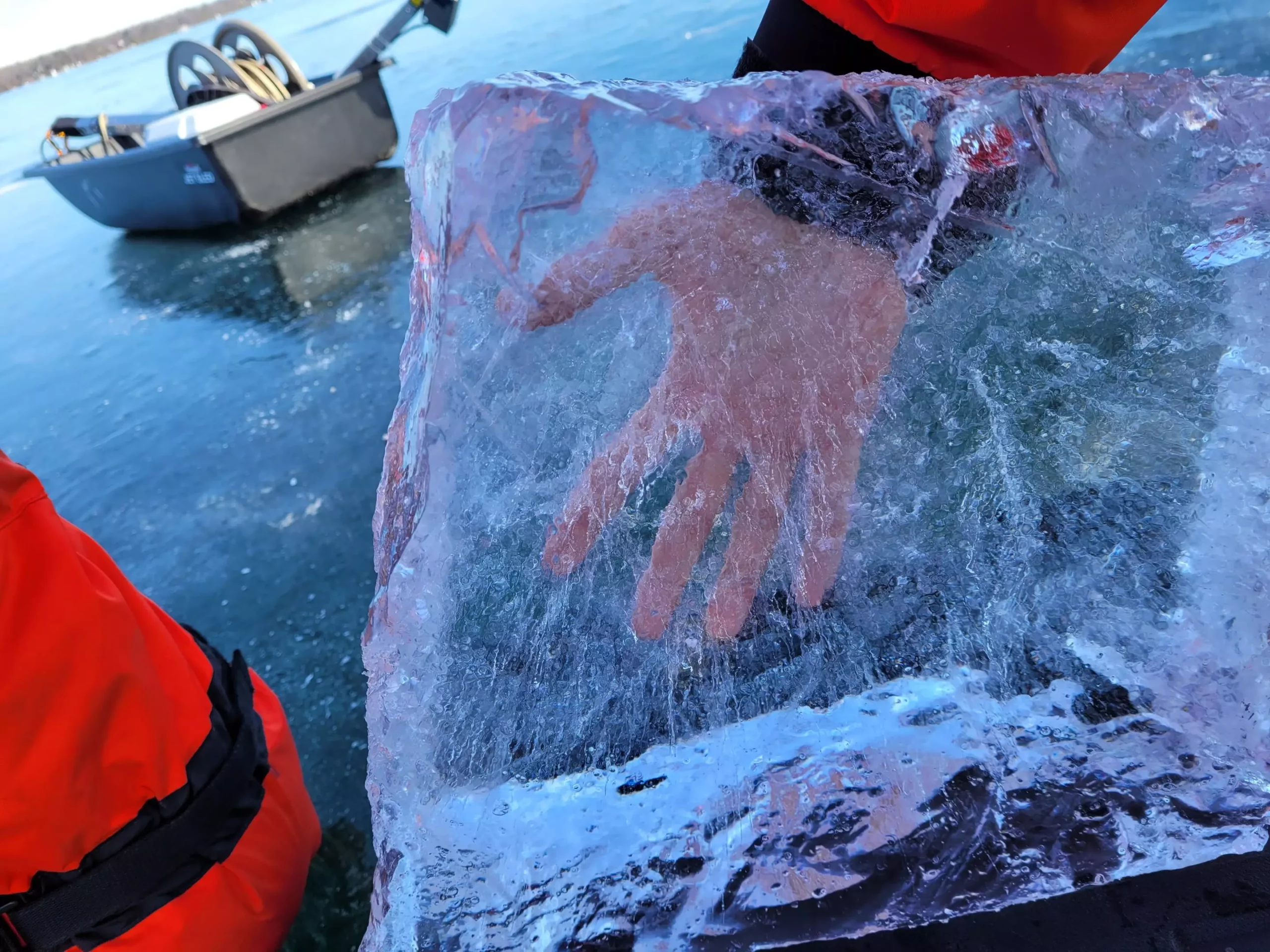As winter rolls in, many people take to frozen lakes and rivers for activities like ice hockey, skating, and ice fishing. However, a study from York University reveals that the changing climate has significantly impacted the safety of these icy surfaces. The research indicates that fluctuations in temperature are altering ice thickness and quality, contradicting the prevalent assumption that ice covering a lake is uniformly safe. Understanding these changes is crucial for ensuring the safety of individuals engaging in winter sports.
Lakes typically consist of two main types of ice: white ice and black ice. White ice, characterized by its opaque appearance, is formed with many air bubbles and smaller ice crystals. This structure inherently reduces its load-bearing capacity, making it less stable and, consequently, more dangerous. Unlike white ice, black ice is clear and dense, featuring larger crystals and fewer air pockets, which lend it significant strength. According to Professor Sapna Sharma, the quality of ice is not only essential for the safety of those on it but also impacts the ecosystem below the surface by determining how much light penetrates the ice.
Due to the warmer winters, researchers like Joshua Culpepper, the lead author of the study, found that thinner layers of black ice often coexist with thicker layers of white ice, creating perilous conditions for anyone venturing out onto the ice. This dangerous dynamic presents a challenge for winter activities; what appears to be a solid sheet of ice may not be able to support the weight of a human, raising critical safety concerns.
For many, the assumption that ice thickness can guarantee safety has emerged as a misconception fueled by climate change. The study highlights how milder winters have caused ice to form later and break up earlier than historical norms, producing unstable ice conditions. Culpepper articulates that one possible consequence of this trend is the development of “dangerous combinations” of ice types, where the presence of too much white ice can lead to hazardous situations for outdoor enthusiasts.
This revelation poses not only a risk for individual winter sports enthusiasts but also for transport and infrastructure. In a warming world, standard measures like the requirement of 10 centimeters (about 4 inches) of black ice for safe skating may become obsolete, as the expected stability is compromised by unexpected changes in ice quality.
The repercussions of this shifting ice landscape have already manifested in tragic ways. The study references multiple incidents across Canada and Finland where individuals lost their lives after falling through thin ice. Such occurrences underscore the urgent need for awareness regarding conditions on frozen lakes, especially as researchers have found that northern regions, which traditionally experience harsh winters, are not immune to the impacts of climate change—often warming at rates up to four times faster than the global average.
The transportation sector, too, faces critical challenges stemming from the decline in reliable ice roads. Some communities rely heavily on these routes during winter months; a decrease in safe ice could trap remote populations and limit access to essential goods and services, exacerbating health and safety risks. With predictions indicating a potential 95% to 99% loss in winter ice road infrastructure, proactive measures are necessary to protect vulnerable communities.
To determine the viability of a frozen surface, experts suggest regularly checking ice conditions, paying close attention to recent weather patterns. Variability in temperature, precipitation, and sunlight can all impact ice strength. As Sharma aptly states, “lake ice has a memory”—past weather conditions can influence its current state. For anyone considering venturing out onto the ice, it’s advisable to at least double the customary minimum thickness required for safe passage if primarily white ice is present.
Ultimately, public awareness and education regarding the dangers of ice quality need to be a priority. The researchers stress that there is a significant lack of data on ice safety and quality, highlighting an urgent need for regular monitoring and assessment of ice conditions across the Northern Hemisphere. By addressing these critical gaps in understanding, strategies can be developed to enhance safety measures and protect lives during winter activities on ice.
While a frozen lake may seem inviting for winter recreation, the data and research indicate a pressing reason to think twice. Awareness and caution can be life-saving in this evolving climate landscape, where old assumptions about ice safety are increasingly unreliable.


Leave a Reply